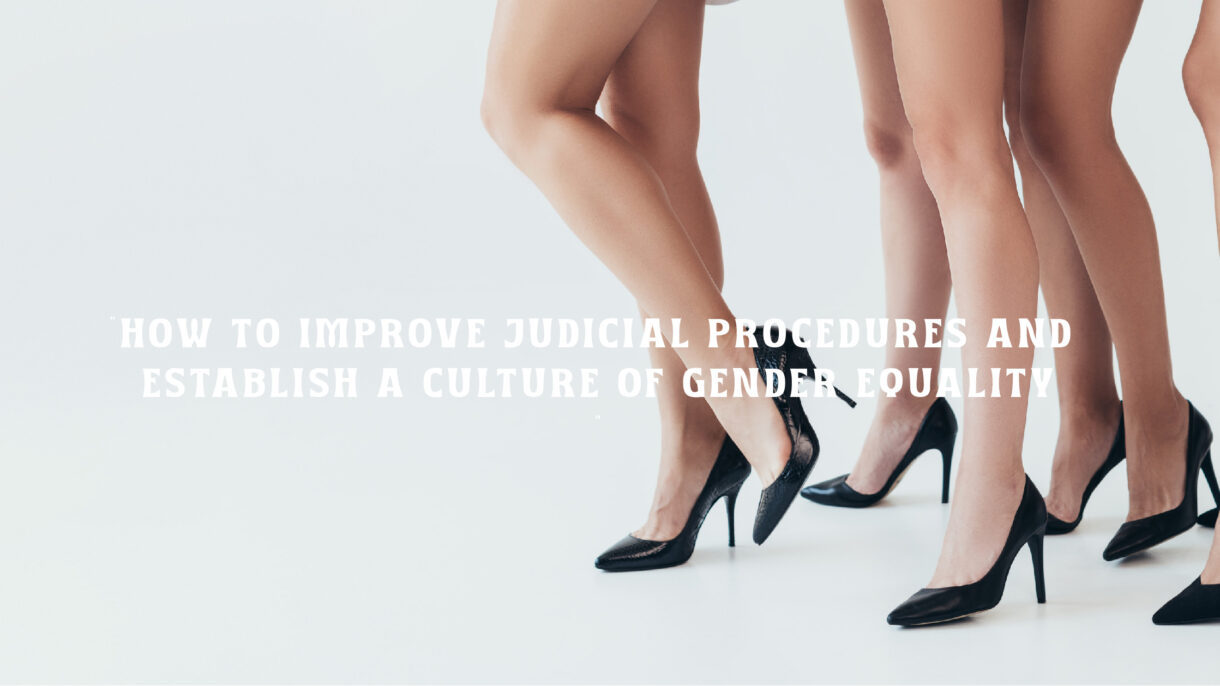
Improving judicial procedures and establishing a culture of gender equality are essential steps toward creating a more just and equitable society. Here are several strategies that can be implemented to achieve these goals:
1. Training and Education
- Judicial Education: Implement comprehensive training programs for judges, lawyers, and court personnel on gender sensitivity, bias, and the implications of gender inequality. Understanding the nuances of gender-based violence, discrimination, and systemic bias can enhance decision-making in cases involving these issues.
- Public Awareness Campaigns: Launch campaigns to educate the public about gender equality and legal rights. This can empower individuals to advocate for themselves and others, increasing access to justice.
2. Policy Reforms
- Gender-Responsive Legislation: Review and revise existing laws to ensure they are gender-sensitive and do not perpetuate discrimination. This includes laws related to family, employment, and domestic violence.
- Clear Guidelines for Gender Cases: Establish clear procedural guidelines for handling gender-based cases, ensuring that they are prioritized and treated with the sensitivity they require.
3. Accessibility and Support
- Legal Aid Services: Expand access to legal aid for women and marginalized groups. Providing resources and support can help individuals navigate the judicial system more effectively.
- Safe Reporting Mechanisms: Create safe and confidential reporting mechanisms for victims of gender-based violence. This can encourage individuals to come forward without fear of retribution or stigma.
4. Representation and Diversity
- Increase Female Representation: Promote the appointment of women to judicial positions and leadership roles within the legal system. Diverse perspectives can lead to more equitable outcomes and a better understanding of gender issues.
- Diverse Legal Teams: Encourage law firms and organizations to build diverse teams that reflect the communities they serve. This can enhance the sensitivity and effectiveness of legal representation.
5. Monitoring and Accountability
- Data Collection and Analysis: Establish systems for collecting and analyzing data on gender-related cases within the judicial system. Monitoring outcomes can help identify biases and areas for improvement.
- Accountability Mechanisms: Create independent oversight bodies to review judicial decisions and practices for gender bias. Regular assessments can hold the system accountable and drive necessary reforms.
6. Cultural Change
- Promote Gender Equality in Legal Culture: Foster a culture within the legal community that values gender equality. This can be achieved through mentorship programs, workshops, and initiatives that highlight the importance of diversity and inclusion.
- Community Engagement: Involve communities in discussions about gender equality and the judicial process. Engaging stakeholders can lead to a broader understanding of the challenges faced and generate collective solutions.
7. International Standards and Collaboration
- Adopt International Norms: Align national judicial practices with international standards for gender equality, such as those outlined in the Convention on the Elimination of All Forms of Discrimination Against Women (CEDAW).
- Collaborate with NGOs: Work with non-governmental organizations and advocacy groups that focus on gender equality. These partnerships can provide valuable insights and resources for reforming judicial practices.
Conclusion
Improving judicial procedures and establishing a culture of gender equality requires a multifaceted approach that includes education, policy reform, accessibility, representation, accountability, cultural change, and international collaboration. By addressing these areas, we can create a more equitable judicial system that not only serves justice but also promotes and protects the rights of all individuals, regardless of gender. This transformation is essential for fostering a society where gender equality is not just a goal but a fundamental principle of justice and human rights.

0 Comments